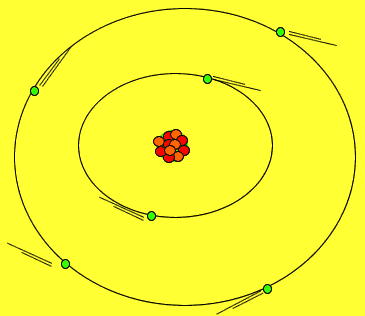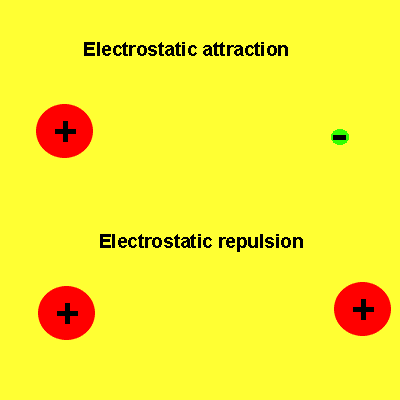Charged particles
The protons carry a positive charge, electrons have a negative charge, while neutrons are neutral. Protons and neutrons are packed tightly in the middle of the atom and form the nucleus. Electrons orbit around the nucleus at high speeds.

Opposite charges attract while like charges repel each other. Forces that attract and repel charged particels are known as electrostatic forces. Fast moving electrons are held close to the nucleus by electrostatic forces of attraction. These forces come about due to the attraction between positive protons and negative electrons.
Electrons travel at almost 1/200th the speed of light. Occasionally they can fly off the atom and travel along to neighbouring atoms. Metal atoms often lose one or two electrons from their atoms. These free electrons can move about in the metal and when forced to move in one direction form an electrical current. Metals are sometimes called conductors because of the presence of free electrons.
Insulators on the other hand, are made of atoms that hold on tightly to their electrons. Since there is no free moving electrons inusulators can not conduct electricity.
